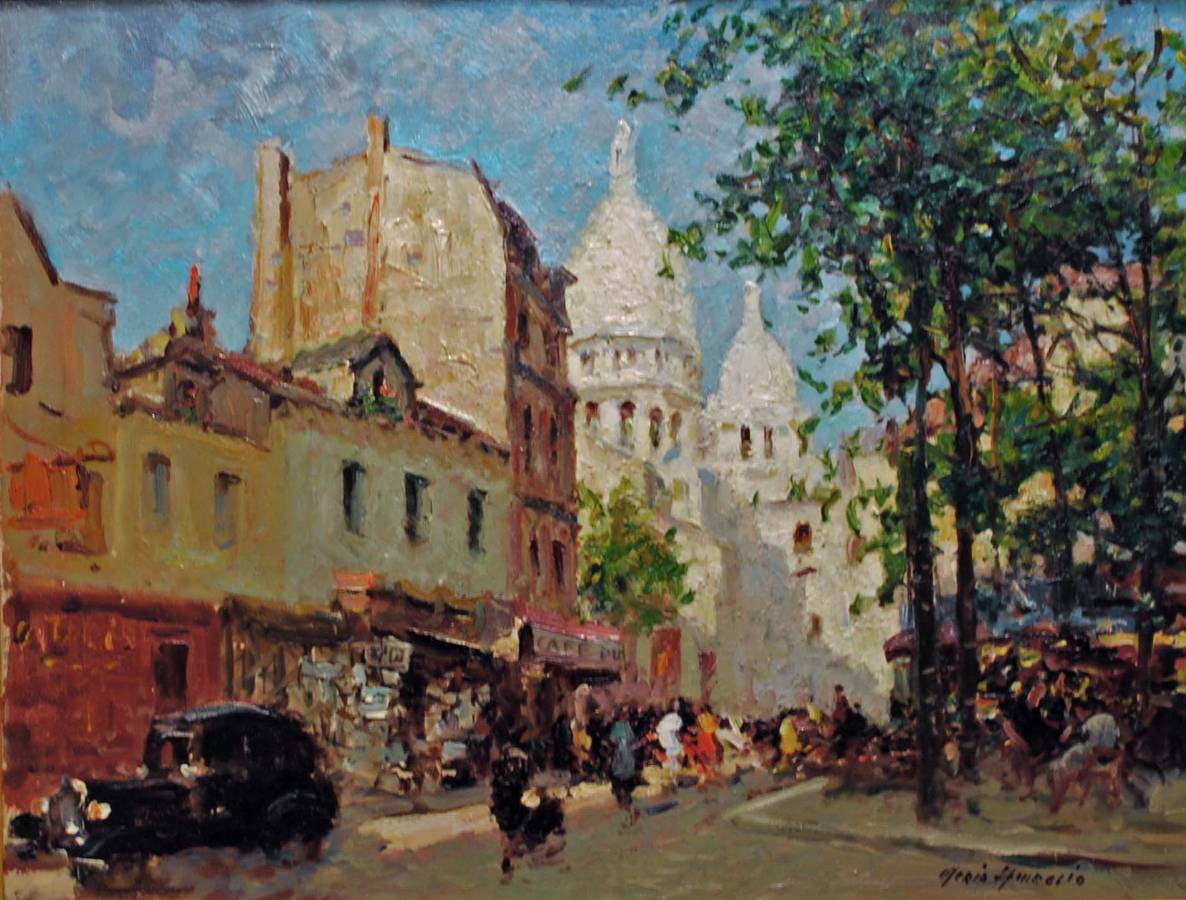(1897-1970)
Merio Ameglio was born in San Remo, Italy on October 4, 1897 Ameglio was raised in the aristocratic intimacy of the Cote d’ Azure amidst the promenade and the Mediterranean Sea. Here, were seeded the initial nuances for his ability along the Mediterranean Sea. He first began his studies on the French coast before moving to Paris in 1938 where he explored and perfected his artistic abilities. Montmartre became not only his main residence but also the beginning of his cultural awakening.
Ameglio established his atelier within walking distance of the heart of Montmartre, la Butte, at 23, rue Clauzel. Although considered to be self taught, Ameglio’s formal education was provided through his encounters and friendships with other well known artists. He met many of the avant-garde artists such as Pablo Picasso, Jacques Villon and Jean Paul Francois Galle, Van Dongen and Severini. Painters of the new movements defining the postimpressionists, the abstractionists and the futurists.
Ameglio became a member of the salons and was a continuous participant. In 1938 during the International Art Exposition he won considerable acclaim and was awarded his first honorable mention for the painting, Cathedrale de Rouen. Thus he
was established.
Although he lived in France, Ameglio was never completely comfortable with the French
language; he kept largely to himself, devoting his energies to his passion for painting. He traveled throughout France and painted a number of different regions including Rouen, Marseille, the Loire and Seine valleys and Chartres. As a result, at the time of his death in 1970, he had produced an abundant collection of colorful canvases of Paris and Montmartre and the surrounding environs.
Ameglio also traveled extensively throughout Europe, but primarily to his homeland of Italy. There he captured the beauty of the landscapes of rural Italy. He painted for
the most part in his preferred medium, oil, but he engaged in the use of various other mediums at times. His subjects are rendered with obvious affection. The finished work is as masterful in technique as it is sensitive to the eye.
On October 29, 1969, a year prior to his passing, a retrospective exhibition was held in his honor at Galerie Cambaceres in Paris. Merio Ameglio’s work is in many private
and public collections worldwide. He continues to gain recognition in the French art market, most notably for those works done in the tradition of the Impressionist masters and painted en plein air.
The noted French critic, Mr. Marcel Guicheteau said of Ameglio, “The works of this artist are always filled with a certain reverie. His harmony, the softness of his tones,
his delicate touch all make Ameglio a painter to evoke poetry.”
Merio Ameglio passed away on July 29, 1970 at his home in Montmartre.

